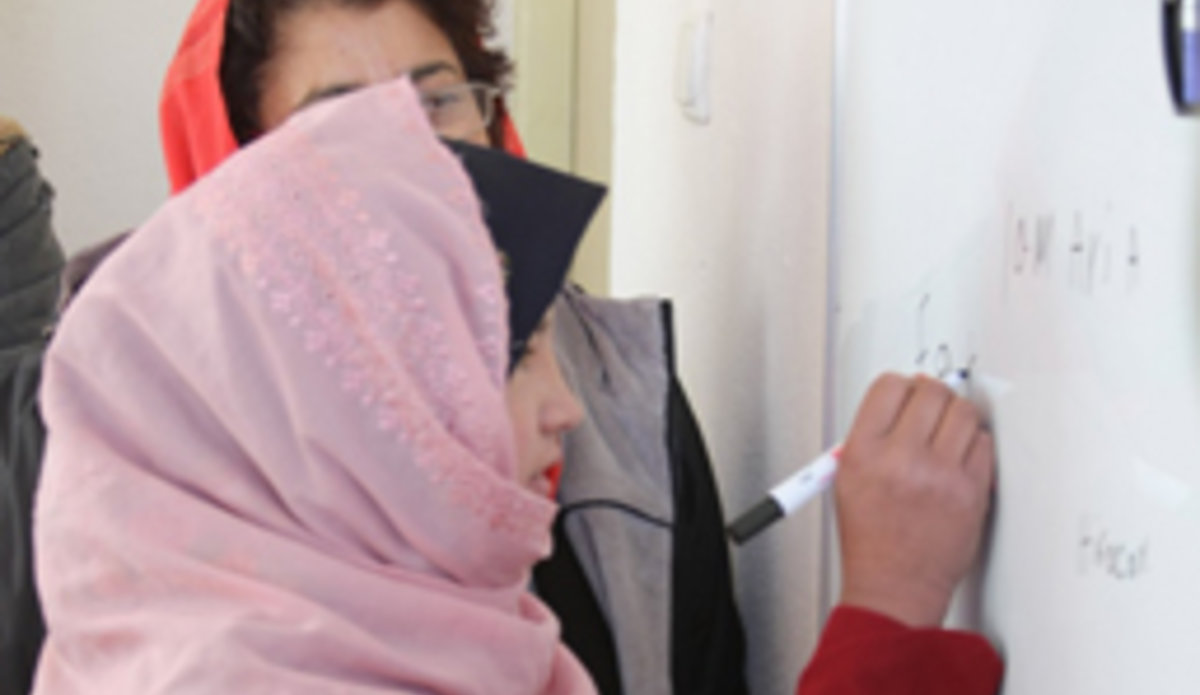Literacy for children, starting with adults
KABUL - Each day, Maryam Ahmadi bids her children farewell as they leave their home in Nawbahar, an Afghan city in the northern province of Balkh, to attend fourth grade at a nearby primary school where they are taught a range of subjects, including mathematics and science, as well as reading and writing.
In the afternoons, the children return to their home, where they share dinner with their parents and start their homework – and bid their 32-year-old mother of five farewell as she takes her turn to attend literacy classes.
At a nearby government building, Mrs. Ahmadi attends a community literacy centre where she takes part in a programme to learn how to read and write.
This women's adult literacy programme, called ‘Enhancement of Literacy in Afghanistan (ELA),’ is part of an initiative started by the Afghan Ministry of Education, with the support of the United Nations Educational, Scientific and Cultural Organization (UNESCO), in 2008.
The aim of the project is to reduce illiteracy among Afghan women as well as to empower those women to obtain better jobs and promote literacy among their children, according to UNESCO.
Until recently, adult literacy classes did not exist in Afghanistan. Education focused almost exclusively on children. With the Afghan economy growing and, commensurate to that, the need for skills rising, the demand for adult literacy classes is now higher than ever.
Afghanistan is a country with one of the lowest literacy rates in the world. According to the UN Children’s Fund (UNICEF), adult literacy rate is 39 per cent, with just 13 per cent of Afghan women able to read and write. The Afghanistan Multiple Indicator Cluster Survey 2010/2011 found that the women’s literacy rate in rural areas is more than three times lower than in urban areas.
With a grant from the Government of Japan, ELA is one of the largest literacy interventions under the framework of UNESCO’s Literacy Initiative for Empowerment in Afghanistan, the UN agency notes on its website.
At the moment, the ELA programme operates in 15 provinces and about 97,000 women are taking classes. The goal is to make 600,000 adults – with a majority of them, 60 per cent, women – literate by the end of 2013, according to UNESCO.
“I really thank ELA. It has really taught my community how to be self-sufficient financially, living peacefully with our neighbours, protecting the environment and teaching our community about hygiene through literacy,” said Nigaro, a literacy facilitator in the capital of Balkh province, Mazar-e-Sharif. “I hope I see a high level of literate people in my country one day.”
When she first began the literacy course, Mrs. Ahmadi said that she felt shy and did not have much to talk about, but with the passing of each day, as her reading and writing improved, this changed. She now actively participates in classes and shares her opinions and ideas with her fellow classmates.
"Now I can go to the hospital by myself. I do not need someone to go with me since I can read where to go in the hospital," Mrs. Ahmadi added in an interview.
In addition to two hours of lessons in reading and writing, Mrs. Ahmadi and her classmates learn about Islam and social values, economics, health, the environment, peace, security and human rights.
The women also learn to be comfortable in a school environment, which educators say is important if women are to support schooling for their children.
“Attending the literacy classes gave me self-confident and now I am able to support my children in their education,” said Mrs. Ahmadi. “I really know what is going on in our community and how to decide about issue raised in the village.”
(The names mentioned in this article have been changed for cultural and security purposes.)
Related links:
- Afghan female police to improve literacy through mobile phone programme
- Enhancement of Literacy in Afghanistan (ELA)
- Afghanistan education fact-sheet
 UN
UN






